North Cascades National Park is a remote area of wilderness tucked into northern Washington State. Below you’ll find the complete guide to the park, including things to do, best times to visit, the park's history, and so much more.
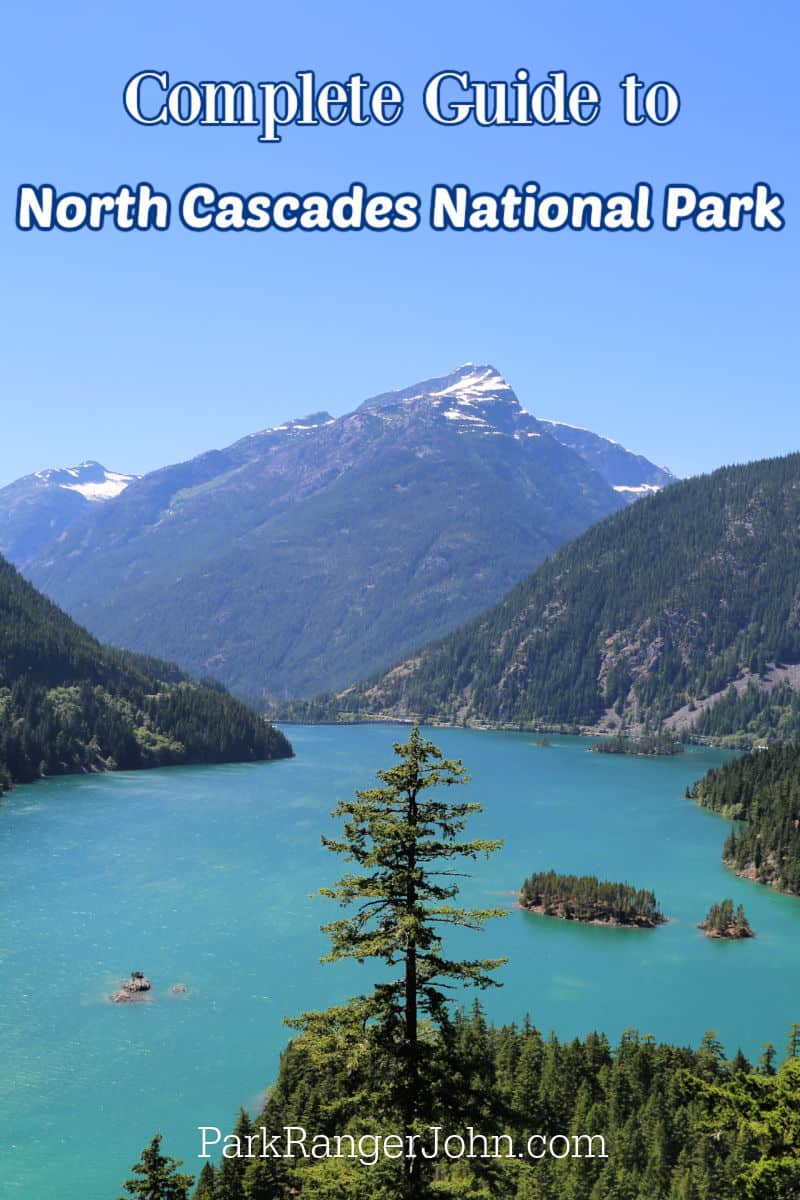
North Cascades National Park
North Cascades NP offers visitors the opportunity to gaze in wonder at the mountains, turquoise waters of Diablo Lake, and the scenic views along State Route 20.
The park has 300 glaciers, jagged peaks, and forested valleys that showcase the beauty of the Pacific Northwest.
The Cascade Mountain Range stretches from British Columbia to Northern California. Over half a million acres of mountains, lakes, and forests were preserved with the 1968 establishment of North Cascades National Park. The park is adjacent to Ross Lake and Lake Chelan National Recreation Areas and together they form the North Cascades National Park Service Complex.
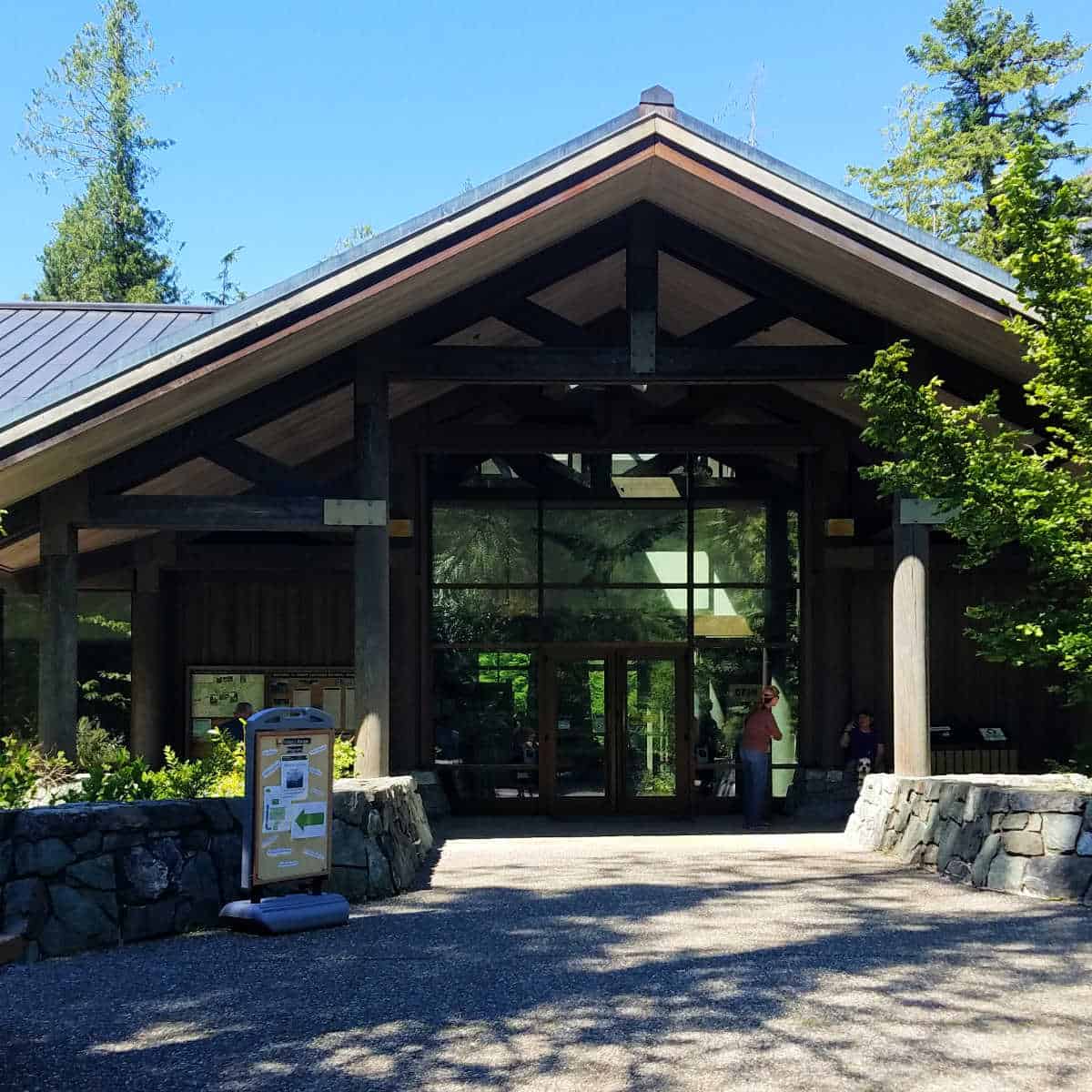
About North Cascades National Park
North Cascades NP is managed as a park complex along with Lake Chelan National Recreation Area and Ross Lake National Recreation Area.
When you visit the North Cascades National Park Complex the park information includes all three parks in one.
Defined by its gorgeous lakes, high mountain passes, and stunning scenery, North Cascades National Park is a true oasis for nature lovers and outdoor enthusiasts.
You can spend your time here ambling along the scenic Highway 20, hiking along the alpine lakes, fishing the streams, or watching for wildlife.
Visitors simply cannot drive into the park. The northern part stretches to the Canadian border and into the Chilliwack Lake, Skagit Valley and Manning Provincial Parks. The southern section is bordered at the south by Lake Chelan National Recreation Area.
The Cascades were named for the countless waterfalls. There is a distinct difference between the east and west sides. The eastern slopes facing high desert terrain is relatively dry. The west is a different story.
Moisture from Puget Sound slams into the mountains causing a yearly rainfall average of 110 inches. Hundreds of glaciers have formed with the largest in the park being Boston Glacier on the north slope of Boston Peak. The first to experience the area were the indigenous peoples and there are 270 archeology sites concerning them.
Traveling west on State Route 20, the North Cascades Highway basically begins at Rainy Pass but travelers have already been driving for miles through mountains and forests since leaving the town of Winthrop. The highway is closed winters when snowed in.
The climbing elevation begins as the road follows Granite Creek until turning alongside Ruby Creek. To the left, the park border is signified by a row of snowy mountain peaks. At any time wandering deer can be spotted. Water flows everywhere from trickling little falls to clean crisp streams.
Ruby Creek feeds into Ross Lake at Ross Dam. The lake stretches 24 miles north to the Canadian border. Those hiking in on the trails may spot a bald eagle fishing for salmon. There are plenty of spots along the highway to pull over and take in the grandeur.
More accessible to campers, boaters and fishermen are Diablo and Gorge Lakes that rest along the highway. Travelers can stop at Diablo Lake Overlook and explore Thunder Knob, Diablo Lake, Sketattle, and Sourdough Mountain trails and visit the North Cascades Environmental Learning Center.
Just outside the small community of Newhalem is the North Cascades National Park visitors center. Park rangers can provide information and assistance to those wishing to hike into the park.
Casual visitors can learn about the park, hike a short trail and have a picnic but beware of mosquitoes. The splendid scenery continues west on State Route 20 until drifting down into farmlands and civilization and finally connecting to the I-5 at Bellingham north of Seattle.
The truly adventurous can fly, boat or hike into Lake Chelan National Recreation Area. Lodging can be found at Stehekin at the north end of the 50-mile glacier lake. There is also skiing and river rafting. The main visual attraction is the 312-foot high Rainbow Falls.
North Cascades National Park offers something for everybody and even those just passing through to get to the interstate will be treated to amazing beauty and reminder of what all of the area once looked like.
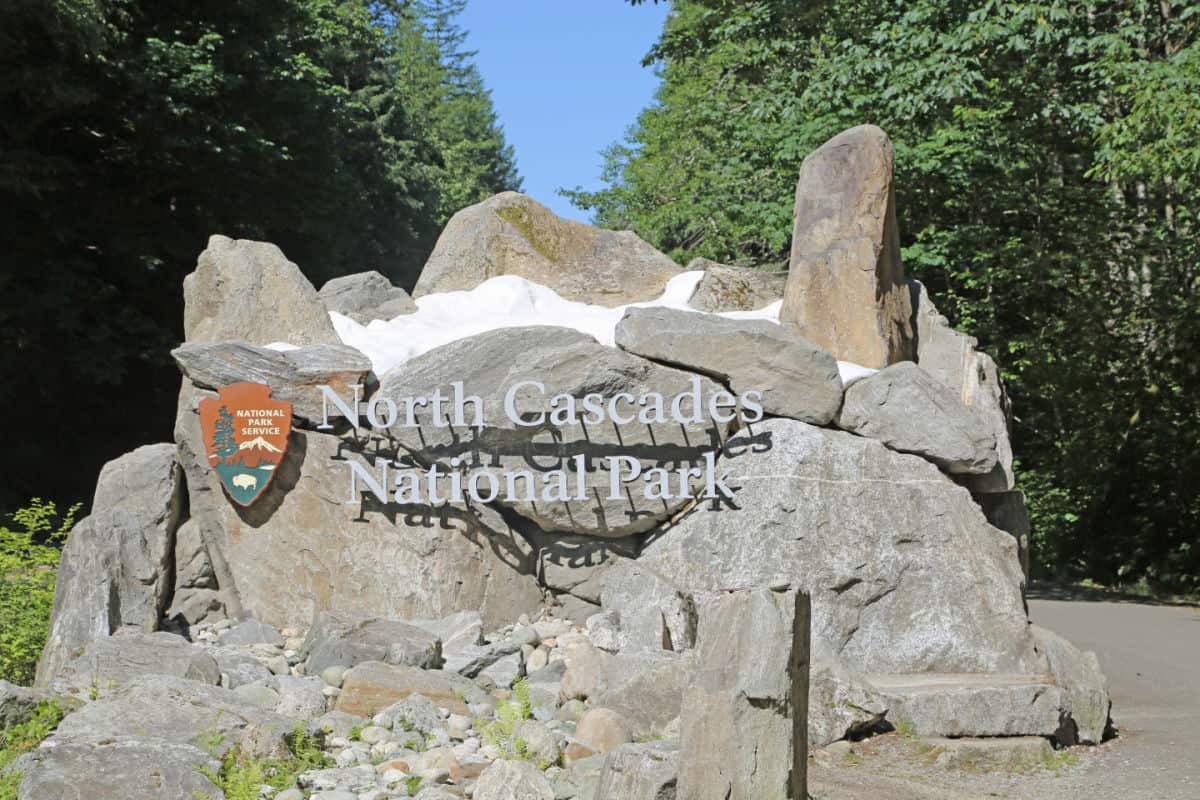
Is North Cascades National Park worth visiting?
Absolutely! While it is in a remote location, North Cascades National Park offers something for all types of travelers, and the scenery is some of the best in the country.
History of North Cascades National Park
Although the park has only been a protected area since its inception in 1968, the human history here dates back thousands of years.
Archaeological evidence suggests that this area was important to Northwest Coast Indian economies.
More recently, there have also been mines, mining camps, fire lookouts, homesteads, sawmills, and sheepherder camps in the area.
The North Cascades National Park protects over 500,000 acres of land with a long human history. North Cascades National Park explores more than 8,000 years of human history.
The history of the park begins with the Native American communities that called the mountain region home long before European fur traders and trappers visited the area.
The First People
The first people to travel through the region that now forms the North Cascades National Park did so between 10,000 and 8,000 years ago. The Native American tribes who called the mountainous region home fished, hunted, gathered, and traded in the area.
The region was home to the Skagit people, who used Cascade Pass to travel between the Puget lowlands in the West and the interior of the North Cascades National Park. The Skagit people used a pass called the Stehekin, which translates to “the way through,” to travel between the regions.
The Skagit people traveled by foot and canoe through the unforgiving terrain. The tribes generally lived in the lowland regions, only moving into the mountains during the summer.
The Fur Traders
Fur traders and trappers were the first Europeans to explore the North Cascades towards the end of the 17th century. The fur traders traveled through the area while following the Columbia River to the Pacific Ocean.
The first European traveler to explore the region is believed to have been a Scottsman named Alexander Ross. Ross worked for the Pacific Fur Company owned by John Jacob Astor. Ross and his companions established a trading post called Fort Okanogan at the confluence of the Okanogan and Columbia Rivers in 1811.
Alexander Ross and his companions traveled through the North Cascades area on foot and by canoe in 1814. Ross traveled across Twisp Pass and made his way to the Stehekin River, which he followed until he came to Cascade Pass. He made his way along the Cascade River until he reached the Skagit River.
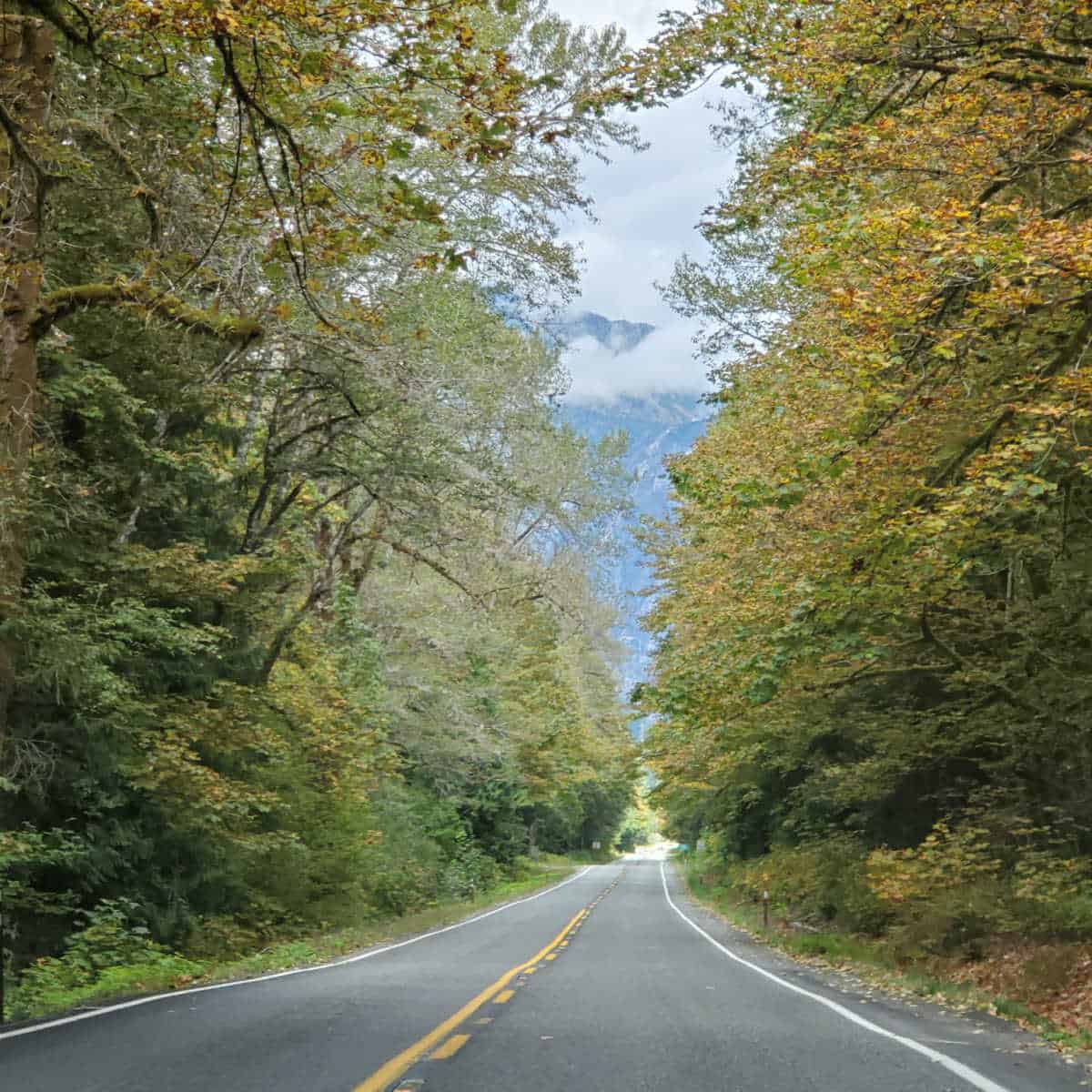
European Explorers
In the 1850s, more Europeans ventured into the region, with the task of exploring the interior of North Cascades. The first group of explorers went to the area to discern which of the rivers, lakes, and mountains were in American territory and which were in Canada.
Sections of the North Cascades National Park lie on the 49th parallel, marking the natural border between the U.S and Canada. Henry Custer explored the northern sections of the park, crossing Whatcom Pass in 1859. Custer published a report on his expedition where he wrote about how awed he was by the Challenger Glacier and the park's natural beauty.
In 1882 Henry Hubbard Pierce, a Lieutenant in the U.S Army was given the task of exploring the region to find a suitable route for the railroad and roads, as well as natural resources.
Pierce and his party explored the Stehekin River Valley, crossed over the Cascade Pass, and made their way down to the Skagit River. Pierce did not find suitable transportation routes, but he found gold-bearing quartz in the Ederado Pass area.
European Settlers
While explorers were setting off on expeditions into the region, European settlers began moving into the area. When Washington Territory was opened to homesteaders in 1848, many migrated to the area despite the region's harshness and unpredictable nature.
The first settlers to the region lived in the lowlands and catered to the needs of the fur trappers, explorers, and miners, rather than starting farms. It was not until the late 1870s and 1880s that settlers moved further into the region, settling along the Skagit, Stehekin, and Cascade Rivers.
In 1882 a small boarding house was constructed along the Stehekin River. The boarding house was later converted into a 25-room hotel in the late 1890s, and the town of Stehekin was born.
Mining in the North Cascades Region
Mining began in the region in the 1850s and continued for nearly 100 years. The first prospectors in the area started looking for gold on the banks of the Skagit River. Gold was discovered twenty years later, in the 1870s, along the banks of Ruby Creek.
The discovery of gold at Ruby Creek drew hundreds of prospectors to the Upper Skagit area, although little gold was found.
In the 1880s, rich silver deposits were discovered high up in the mountains close to Cascade Pass, the Boston Glacier, and the Horseshoe basin, sparking another rush of prospectors to the area. It proved too costly to remove the ore from the region, so most companies left in the early 1900s.
The miners were responsible for building many of the bridges and roads in the region, including a precarious trail known as the Goat Trail. The trail featured a rather precarious suspension bridge known as the Devil’s Corner. The miners built roads along the Cascade and Stehekin Rivers to Horseshoe Basin.
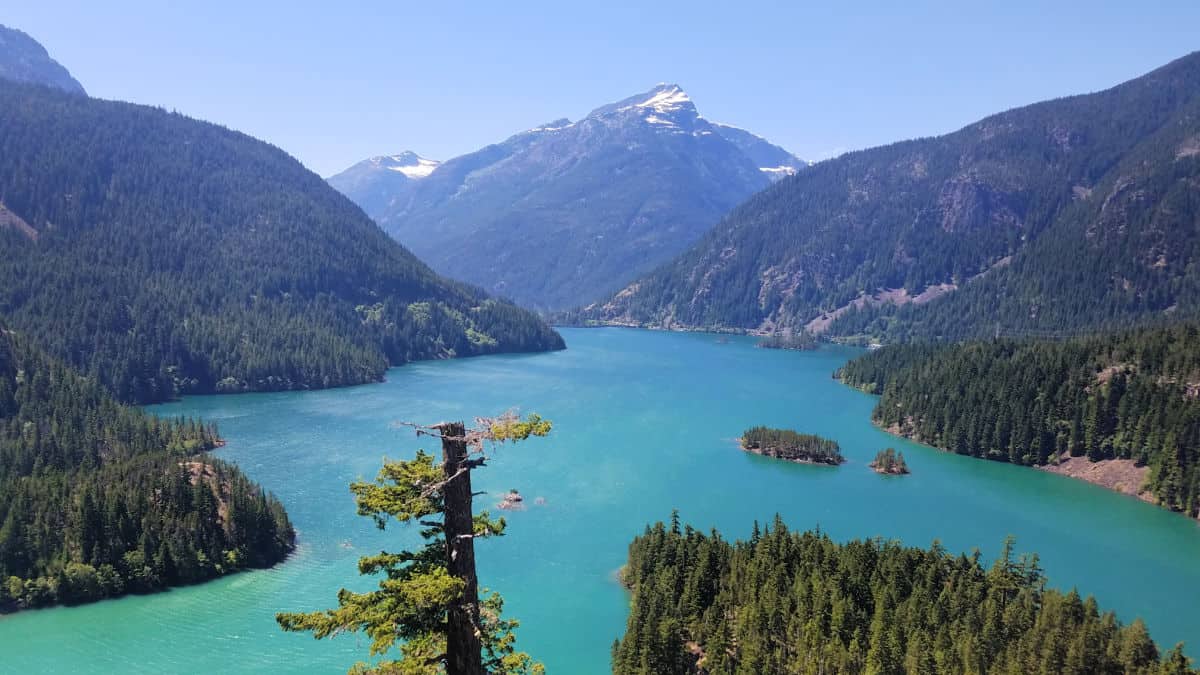
Things to know before your visit to North Cascades National Park
North Cascades National Park Entrance Fee
North Cascades National Park does not charge an entrance fee!
There are fees for passenger ferry service to Stehekin in the Lake Chelan National Recreation Area.
Learn more about National Park Passes for parks that have an entrance fee.
$80.00 - For the America the Beautiful/National Park Pass. The pass covers entrance fees to all US National Park Sites and over 2,000 Federal Recreation Fee Sites for an entire year and covers everyone in the car for per-vehicle sites and up to 4 adults for per-person sites.

Buy your pass at this link, and REI will donate 10% of pass proceeds to the National Forest Foundation, National Park Foundation, and the U.S. Endowment for Forestry & Communities.
National Park Free Entrance Days -Mark your calendars with the free entrance days the National Park Service offers for US citizens and residents.
Time Zone
PST - Pacific Standard Time
Pets
Pets are only allowed on leashes on the Pacific Crest Trail and within 50 feet of roads within the park.
They are not allowed in any other parts of the park. Pets are allowed on a leash within Ross Lake and Lake Chelan NRA.
Cell Service
Cell service really depends on where you are within the park. There is minimal service near the town of Newhalem.
Park Hours
The park is open year-round but not all areas are reachable year-round.
The operational season is late May-late September, with limited services outside of these months.
Wi-Fi
There is no WiFi available in the park.
Parking
Because the park is so undeveloped, large parking lots are few and far between. There are numerous lookout points and attractions along State Route 20, though parking options at various sites may be limited to a small number of vehicles.
Your best options for parking will be found near the visitor centers and campgrounds.
Food/Restaurants
There are no restaurants in North Cascades National Park. Lake Chelan National Recreation Area (which is managed as part of the North Cascades complex) does have a lodge with dining options in Stehekin. The only way to get to Stehekin is by a four hour boat ride up Lake Chelan.
Don't worry, there are plenty of dining options both west and east of the park off Highway 20.
If you at the West side of the North Cascades, there is Marblemount and Concrete and if you travel to Interstate 5, you will be in Sedro Wooley and Burlington.
If you are on the East side of the North Cascades, you can stop in at Winthrop, Twisp, or the closest larger town is Chelan.
Gas
There are no gas stations within the park. There are gas stations along the main highway.
Drones
Drones are not permitted within National Park Sites.
Don't forget to Pack these Items
Insect repellent is always a great idea outdoors, especially around any body of water.
We use Permethrin Spray on our clothes before our park trips. Please read my article on preventing biting insects while enjoying the outdoors.
Sunscreen - I buy environmentally friendly sunscreen whenever possible because you inevitably pull it out at the beach.
Bring your water bottle and plenty of water with you. Plastic water bottles are not sold in the park.
Sunglasses - I always bring sunglasses with me. I personally love Goodr sunglasses because they are lightweight, durable, and have awesome National Park Designs from several National Parks like Joshua Tree, Yellowstone, Hawaii Volcanoes, Acadia, Denali, and more!
Click here to get your National Parks Edition of Goodr Sunglasses!
Binoculars/Spotting Scope - These will help spot birds and wildlife and make them easier to identify. We tend to see waterfowl in the distance, and they are always just a bit too far to identify them without binoculars.
Electric Vehicle Charging
EV Charging Stations are available in Rockport, Concrete, Mazama, Winthrop, and Bellingham, WA.
There are also charging stations near Lake Chelan, WA.
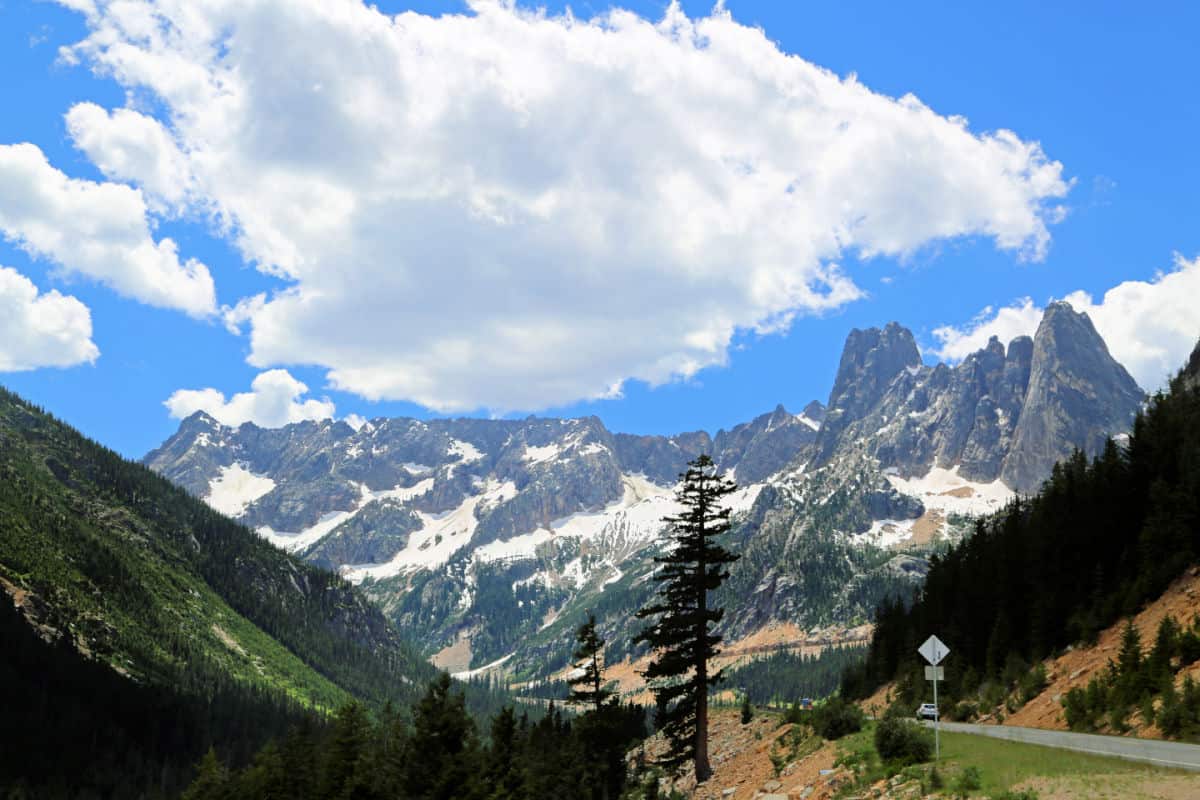
Details about North Cascades National Park
Size - 504,780 acres
North Cascades NP is currently ranked at 20 out of 63 National Parks by Size.
Date Established
October 2, 1968
Visitation
In 2021, North Cascades NP had 17,855 park visitors.
In 2020, North Cascades NP had 30,885 park visitors.
In 2019, North Cascades NP had 38,208 park visitors.
Learn more about the most visited and least visited National Parks in the US
National Park Address
810 State Route 20
Sedro-Woolley, WA 98284nb
National Park Map
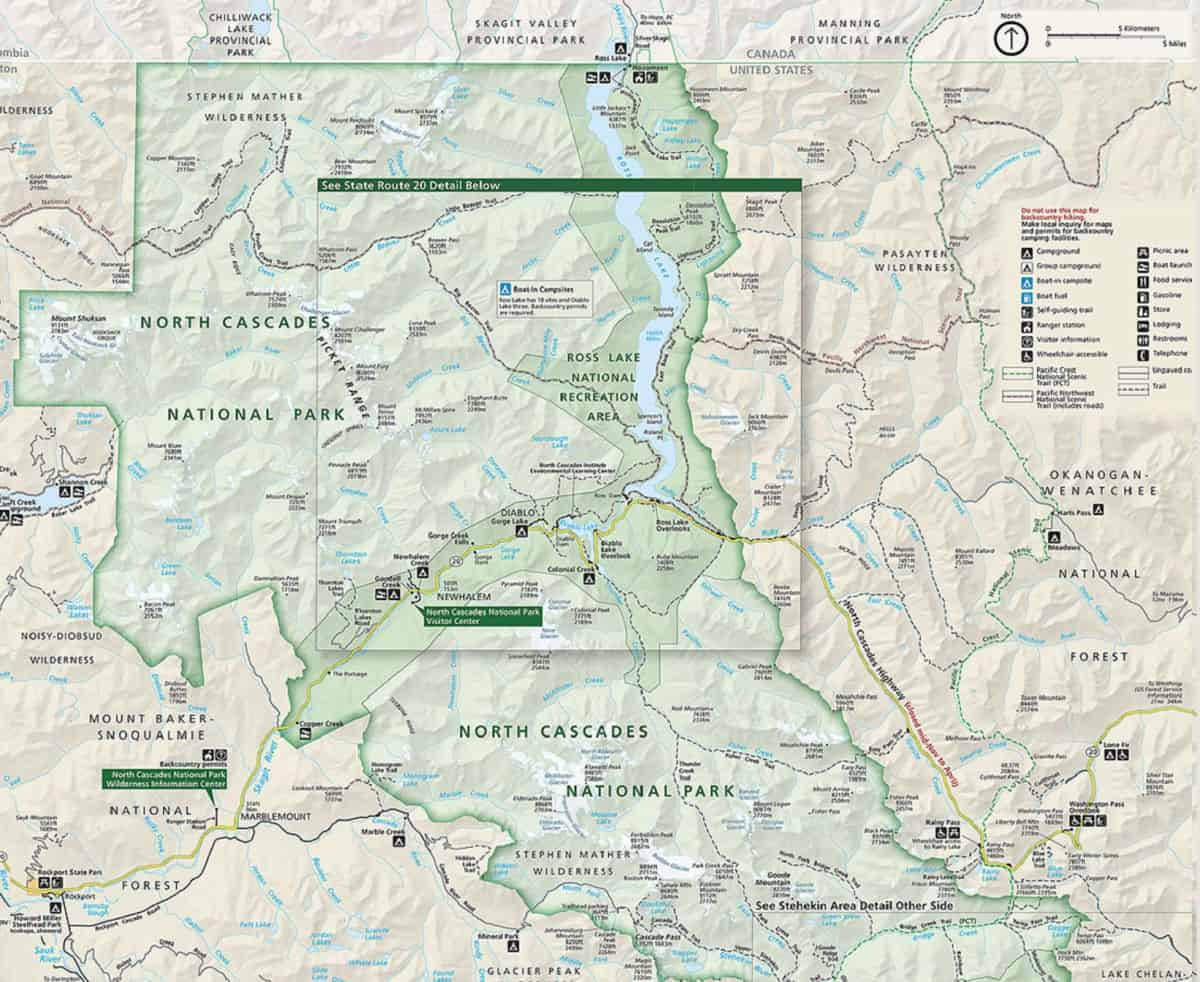
For a more detailed map of the park we like the National Geographic Trails Illustrated Maps available on Amazon.
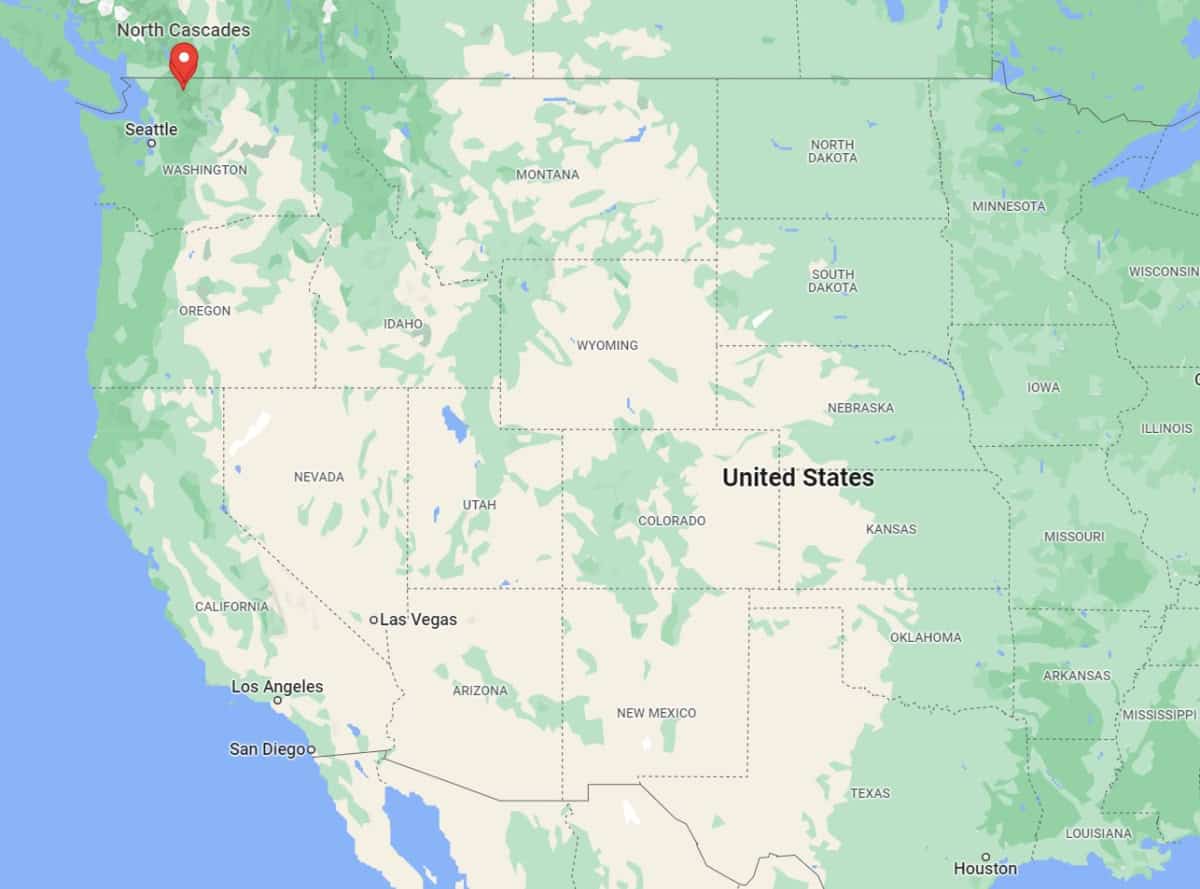
Where is North Cascades National Park?
North Cascades National Park is located in the remote region of northern Washington. While the park may seem cut off from the rest of the world, it is really just a few hours from both Seattle and Vancouver.
Highway 20 cuts its way through the heart of the park, making the dramatic scenery accessible to virtually anyone with a set of wheels.
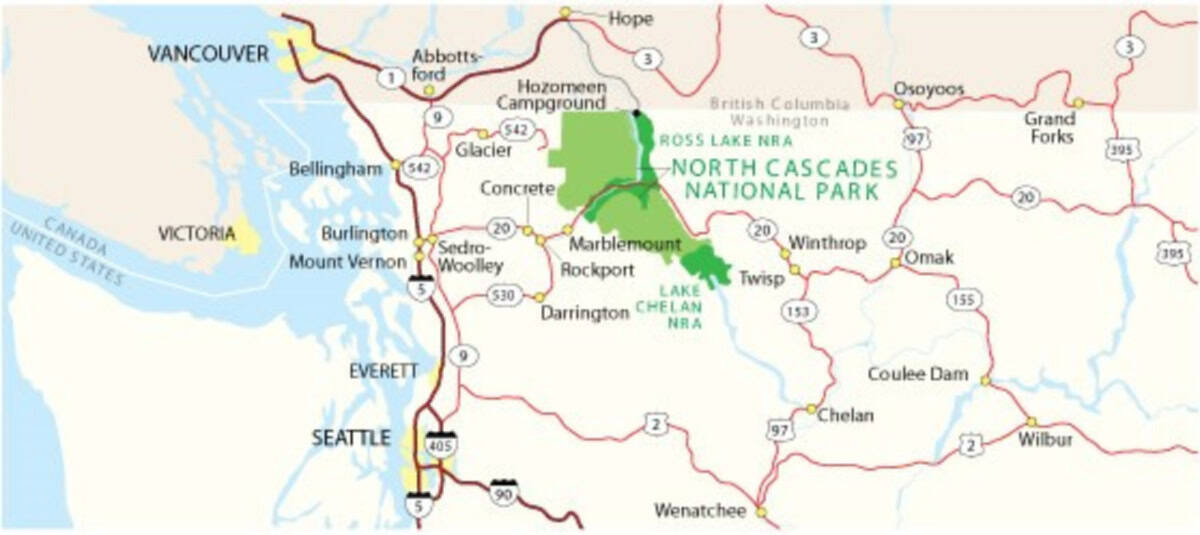
Estimated distance from major cities nearby
- Bellingham, WA - 80 miles
- Seattle, WA - 117 miles
- Olympia, WA - 177 miles
- Spokane, WA - (Updated after winter)
- Portland, OR - 290 miles
Estimated Distance from nearby National Park
Mount Rainier National Park - 217 miles
Olympic National Park - 161 miles with a ferry ride
Glacier National Park - 660 miles
Yellowstone National Park - 850 miles
Where is the National Park Visitor Center?
North Cascades Visitor Center
Location - The North Cascades Visitor Center is located off of State Route 20 near milepost 120. Close to Newhalem and next to the Newhalem Creek Campground.
GPS - 48.66625957872967, -121.26594072586927
The visitor center has exhibits, rangers available to answer questions, a theater, and a few short interpretive trails.
Park and Forest Information Center
Location - The Park and Forest Information Center is located off of the North Cascades Highway State Route 20 in Sedro-Wooley, Washington.
It is 5 miles east of I-5 approximately 90 minutes north of Seattle.
Address - 810 State Rte 20, Sedro-Wooley, WA
GPS - 48.511311095318376, -122.22461544335262
The Park and Forest Information Center is operated jointly with the Mt. Baker District of the Mt Baker Snoqualmie National Forest.
The information center has maps of the area, an information center, and a small store.
Wilderness Information Center
Location - The Wilderness Information Center is located off of State Route 20 in Marblemount.
Address - 7280 Ranger Station Rd., Marblemount, WA 98267
GPS - 48.53857286532217, -121.44786885232564
The information center has exhibits on backcountry travel, a small book store, and the main backcountry permit office for North Cascades NP.
Golden West Visitor Center
Location - Close to the ferry landing in Stehekin on Lake Chelan.
GPS - 48.308393415211626, -120.65597021979634
This visitor center offers maps and history of the area, an information desk, a small store, and short talks during the day.
Glacier Public Service Center
Location - Just east of Glacier, Washington off of the Mt. Baker Highway 542
Address - 10091 Mt Baker Hwy, Glacier, WA 98244
GPS - 48.888413751511756, -121.9377935197731
This service center is jointly run between the NPS and US Forest Service. Visitors can obtain backcountry permits, shop in the small store, and ask questions of the rangers on duty.
Methow Valley Ranger Station
Location - 24 West Chewuch Rd, Winthrop, WA 98862
GPS - 48.4790812209516, -120.18888469095366
The Methow Valley Ranger Station has a small store, and is staffed during the summer by US Forest Service Rangers.
Skagit Information Center
Location - On SR 20 in the town of Newhalem
GPS - 48.67327886667706, -121.24684409279713
The Skagit Information Center is operated jointly with Seattle City Light, the North Cascades Institute and the National Park Service.
Visitors can find information on visiting the park along with exhibits on hydroelectric power and Skagit Project Dams.
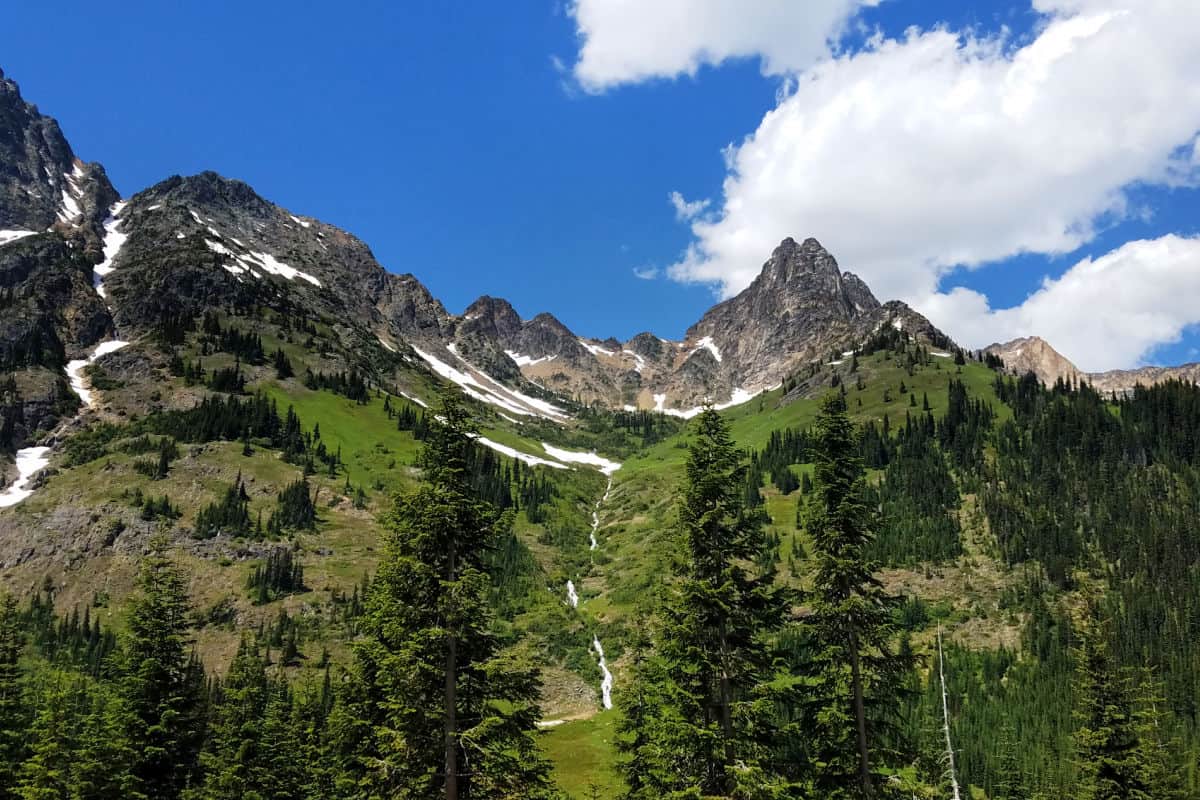
Getting to North Cascades National Park
Chelan Seaplanes - Offers service from Chelan to Stehekin and Lake Chelan NRA
International Airports
Seattle - Tacoma International Airport (SEA)
Vancouver International Airport, Canada (YVR)
Bellingham International Airport (BLI)
Regional Airports
Pangborn Memorial Airport (EAT)
Amtrak Train Service
The Amtrak Cascade route travels to Mount Vernon Station twice a day from Seattle and Vancouver.
The Empire Builder route travels to Spokane once a day from Seattle and Minneapolis.
Greyhound Bus Service
Greyhound serves towns along Interstate 5 and Highway 99 that includes Mount Vernon and Bellingham.
They also serve Leavenworth and Wenatchee along Highway 2.
Local Bus Service
Skagit Transit services the towns of Sedro Wooley and Concrete, WA. They have bike racks mounted on the buses for visitors wanting to bike into the park.
Link Transit buses connect from Wenatchee to the Chelan ferry dock for visitors to catch the passenger ferry to Stehekin.
Lake Chelan Ferry
To reach the town of Stehekin visitors will need to catch The Lady of the Lake ferry from Chelan. Daily ferry service is offered from mid-Spring until early fall with reduced services in the winter.
Driving Directions
While North Cascades National Park may feel worlds away from any major city, but in all reality it is relatively close to some of the biggest hubs in the Pacific Northwest.
Highway 20 is the main route through the park, and this scenic road is easily accessible from Vancouver (about 2.5 hours), Seattle (about two hours), and everywhere in between.
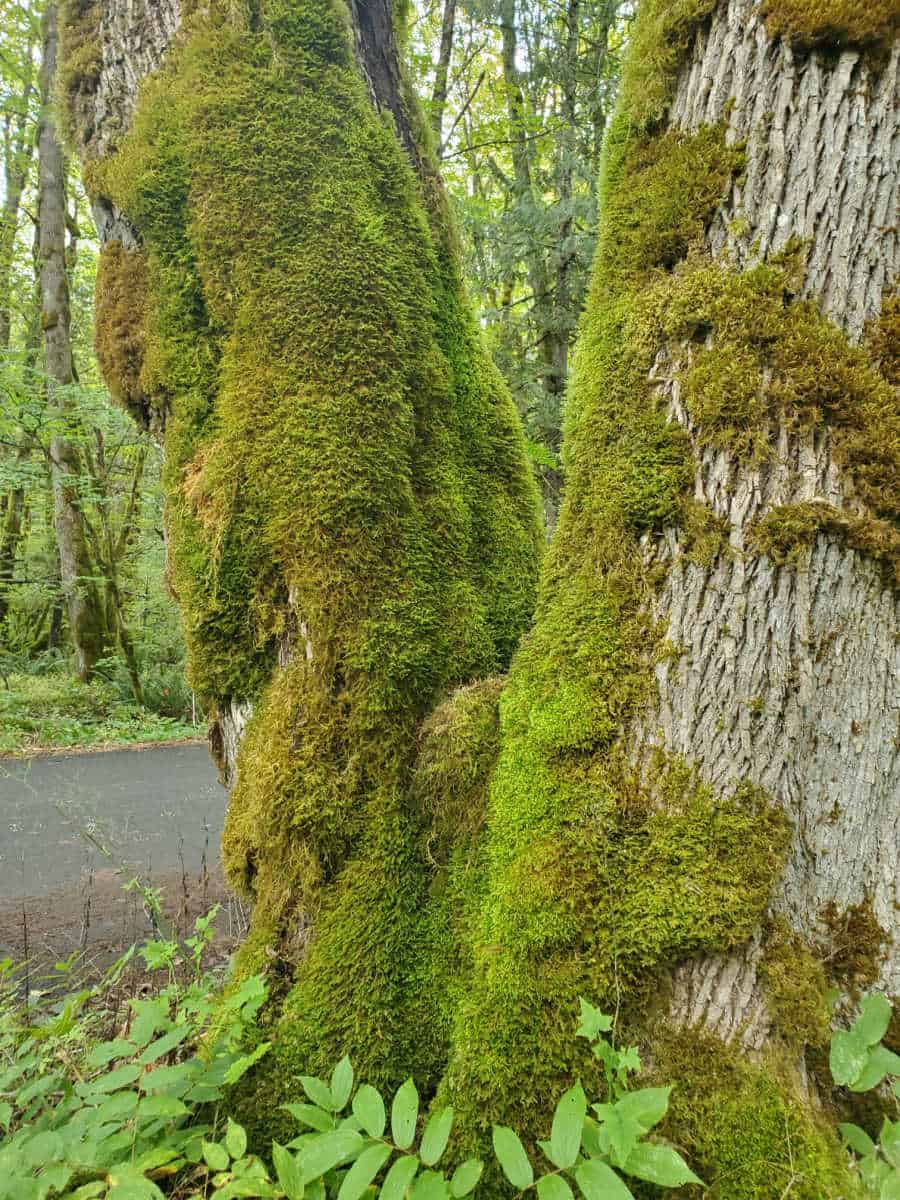
Best time to visit North Cascades National Park
The best time to visit North Cascades National Park is during the summer, and this may be the only time that the park is accessible!
Snow sticks around on some of the trails through July, and road closures make it difficult to explore the park the rest of the year.
Weather and Seasons
Spring
While much of the park is inaccessible in the early months of spring, late spring is one of the best times to visit the park. Highway 20 usually opens back up in April or May, and most visitors don’t start flooding the park until June.
While you may have much of the park to yourself during the spring, be prepared for freezing temperatures and snow. Note that some areas of the park may not be open this early, including various trails and dirt roads.
Summer
Summer is by far the best time to visit the park. The snow is (mostly) melted, wildflowers are in full bloom, and the weather is on its best behavior (though you can expect the unexpected at high altitudes).
As a result, popular areas of the park will likely be at full capacity during the summer months, especially on weekends and holidays.
Autumn/Fall
Early autumn is another great time for visiting North Cascades National Park. The main draw is the fall foliage, specifically the changing colors of the larches.
During peak leaf peeping season (usually between September and early October), expect large crowds around Washington Pass, Heather Pass, and Maple Pass.
Winter
While winter brings a beautiful white dusting to the park, it also closes down the main roads within the park.
Highway 20 is often closed from September to May, though the area remains popular with winter sports enthusiasts.
Some low-elevation trails and the road around Diablo Lake are worth checking out in the winter if you're feeling adventurous.
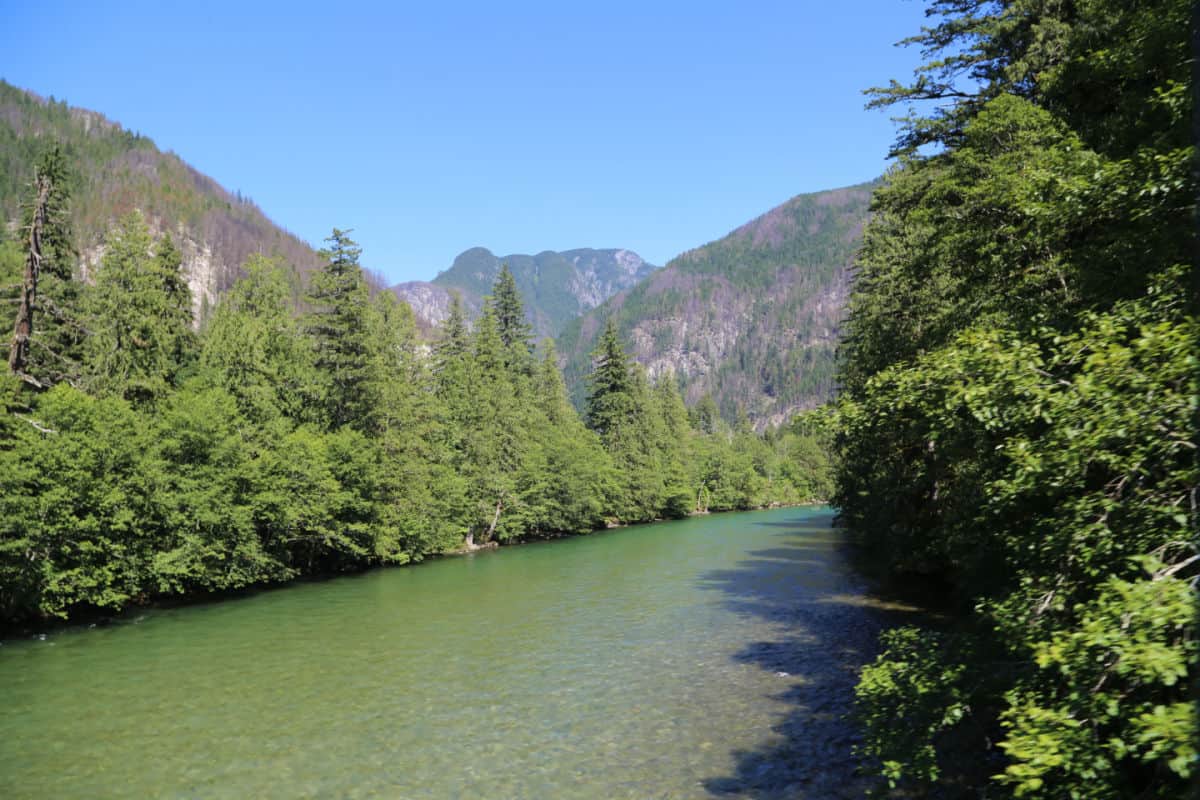
Best Things to do in North Cascades National Park
One of the best things to do in North Cascades NP is stare in awe of the mountains and turquoise waters of Diablo Lake.
The park is wide spread and offers an easy adventure off of Highway 20 or an epic hiking adventure deep into the mountains for visitors who want to get away.
North Cascades Highway
One of the most scenic drives in the National Park System is the The North Cascades Highway (Highway 20).
This route passes through incredible mountain peaks, turquoise blue waters of Diablo Lake and some of the best nature has to offer in the lower 48.
This scenic route meanders through the heart of the park taking you past many of the area’s main attractions including campgrounds, lookout points, and trailheads.
The one thing to remember is that The North Cascades Highway is only open seasonally, so be sure to check for closures before heading out.
The scenic highway does not actually traverse through the national park but follows Skagit River along the Ross Lake National Recreation Area.
The national park is divided by Ross Lake into north and south sections of remote and rugged wilderness accessible only to backpackers and mountain climbers via 400 miles of trails.
Diablo Lake
Known for its bright turquoise waters, Diablo Lake is one of the park’s most iconic features.
The lake is located off of Highway 20, and even if you only make a quick stop at the overlook, Diablo Lake is not to be missed.
You could easily spend a whole day at this scenic spot, and there are a variety of trails along its perimeter and plenty of spots to put in your canoe or kayak.
Wildlife and Bird Watching
The North Cascades is home to one of the most diverse ecosystems in the world.
This makes it a great spot for animal watching, so keep your eyes peeled for mule deer, black-tailed deer, black bears, bobcats, and mountain lions, among others.
Birders will also have plenty to watch for, as there are over 200 species flying around the park at any given time.
Junior Ranger Program
If you brought the kiddos along to North Cascades National Park, be sure to sign them up for the Junior Ranger Program.
They’ll learn all about the park’s history, its flora and fauna, and more in a fun, hands-on way. They’ll also receive a cool badge to commemorate their time at the park after they complete the program.
Stehekin
Stehekin is a small community located at the headwaters of Lake Chelan.
There are no roads connecting Stehekin Valley to the rest of the world, so the only way to access this rugged area is by foot, boat, or plane. This incredible area is worth checking out while inside the park, though it may take a bit of planning.
Fishing
It’s hard to find a better spot for casting out than North Cascades National Park, Ross Lake National Recreation Area, and Lake Chelan National Recreation Area.
These three interconnected segments offer top-notch angling opportunities. Some of the best spots for reeling in keepers include the Skagit River, Gorge, Diablo, Chelan, Ross Lakes, and Stehekin River.
Some common fish swimming through these areas include a variety of trout, steelhead, kokanee salmon, and a variety of bass.
A Washington State Fishing license is required for all areas within the park and recreation areas. You cannot obtain a permit within the park, so you must do so in advance via the Washing State Department of Fish and Wildlife Website.
Wildlife
The park includes temperate rainforest, ponderosa pine ecosystems, and mountains, glacier, and waterways.
These diverse eco-systems create a park filled with wildlife including Mountain Goat, Bighorn Sheep, Moose, Elk, Black Tailed Deer, Red Fox, Canada Lynx, Bobcat, Cougar, Skunks, Wolverine, River otter, Pine Marten, Raccoons, Black Bears. and more.
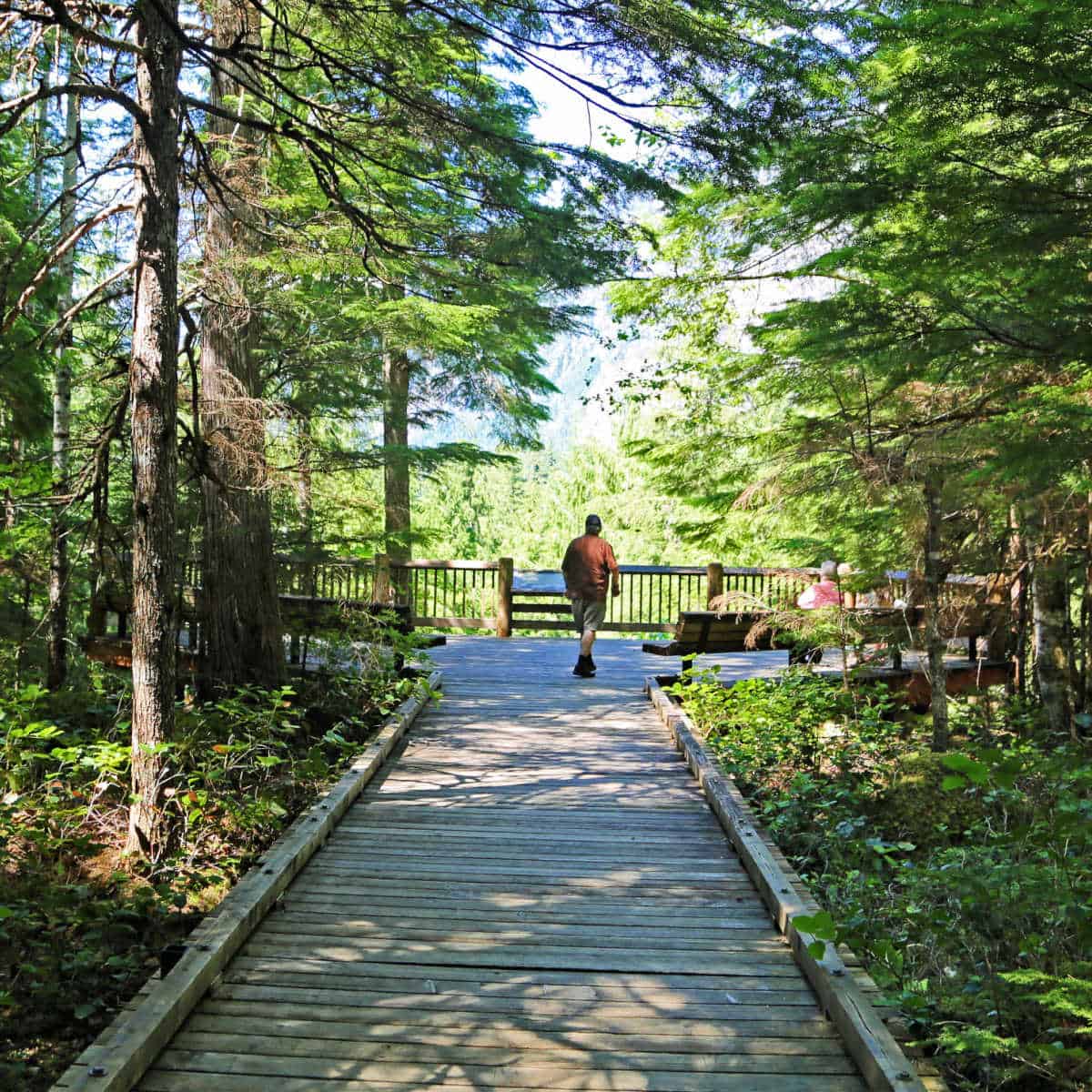
Hiking in North Cascades National Park
Always carry the 10 essentials for outdoor survival when exploring.
There are over 400 miles of trails in the park. It would be a daunting task to list all of them, so we’ve outlined some of the best routes below. Although there is no fee to enter the park, you may need a Northwest Forest Pass to access some of the trailheads.
- Ladder Creek Falls - Easy - .5 miles - Loop
- Ross Dam Trail - Easy - 1.4 miles - Out & Back
- Rainy Pass Trail - Easy - 2 miles - Out & Back
- Slide Lake Trail - Moderate - 2.7 miles - Out & Back
- Blue Lake Trail - Moderate - 4.6 miles - Out & Back
- Thorton Lakes Trail - Hard - 10.9 miles - Out & Back
- Cascade Pass + Sahale Arm Trail - Hard - 12.1 miles - Out & Back
- Heather-Maple Pass - Hard - 7.4 miles - Loop
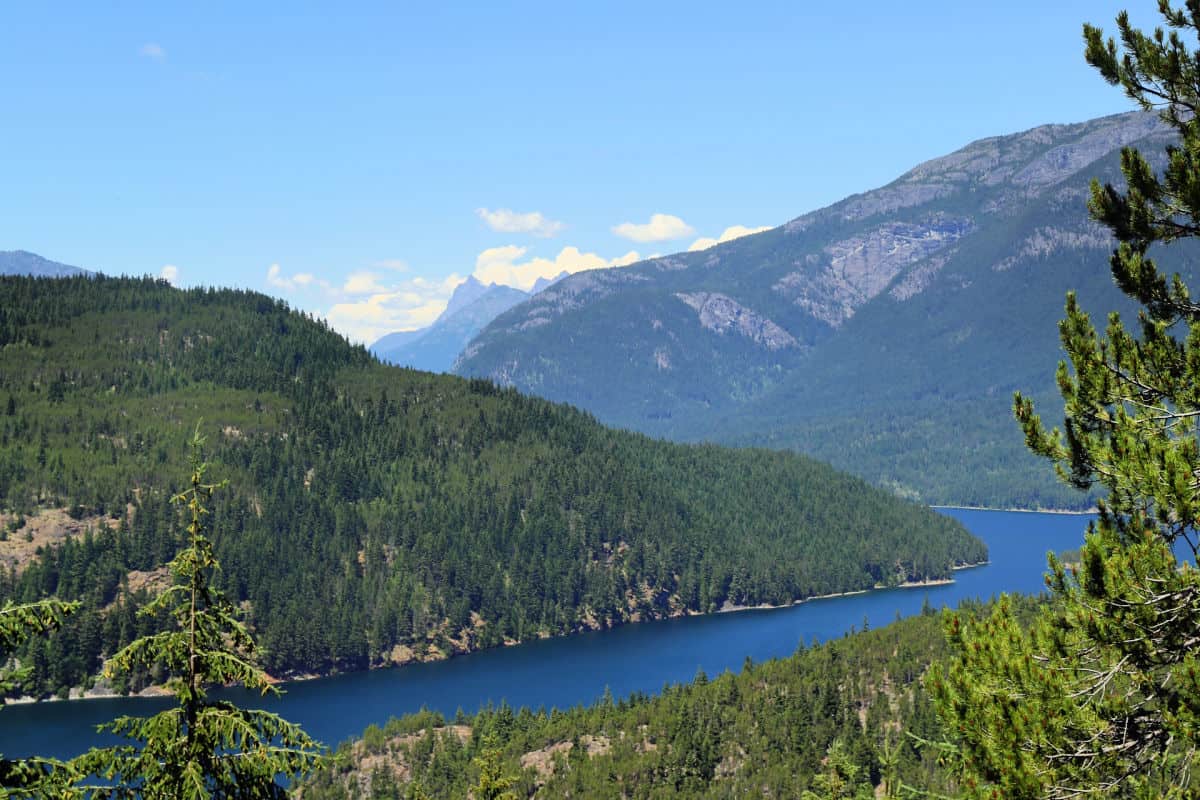
How to beat the crowds in North Cascades National Park
Because the visitation window is so small, it can be hard to beat the crowds in North Cascades National Park.
Summer is the busiest time of year, and it’s also the only time when the park is guaranteed to be open and accessible.
Some of the best tips for avoiding crowds include visiting during the week and at the tail ends of peak season - late May and early September.
If you have experience in the backcountry, you could also choose to venture off the beaten path to the lesser-known areas of the park.
Where to stay when visiting North Cascades National Park
Ross Lake Resort
Ross Lake Resort offers some of the best views in the park. The resort is made up of 15 floating cabins, making the lake your own private backyard.
Each cabin boasts spectacular views of snowcapped mountain peaks and verdant evergreen forests.
The only downside is that the resort is quite far off the beaten path and is best accessed by ferry or water taxi. You could always walk in, though if you have a lot of luggage you may want to skip the mile-long hike.
North Cascades Lodge at Stehekin
The North Cascades Lodge at Stehekin is another great option for staying the night in the park. You can rent a room at the lodge, a private cabin, or an entire house if you are traveling with a large group.
The scenery is splendid and features panoramic views of Lake Chelan and the mountains that surround it.
Just like Ross Lake Resort, the lodge is extremely remote. Plan on taking a ferry ride from the town of Chelan, or hopping on a shuttle bus and hiking about 23-miles from the highway.
Lodging near North Cascades NP
Lodging options outside the park from both the West and East sides of the park
From the West end of the park in Concrete, WA.
Mt. Baker Hotel—This is a 2.5-star, 8-room hotel with Air Conditioning, free parking, and free Wi-Fi. There is no elevator, some rooms are upstairs, and no pets are allowed.
On the east side of the Park is Winthrop, Wa.
Most people who drive through Winthrop end up stopping and spending some time here! Yes, this is a tourist town, and it has an undeniable appeal, with an old West feel and wooden walkways between buildings.
I personally really like Winthrop, especially the Old Schoolhouse Brewery. It has good food and pretty good beverages too! As far as Lodging goes, there are several options.
Sun Mountain Lodge is a popular hotel in the Winthrop area. It has a 4.5/5 star rating and breathtaking views of the North Cascades and the Methow Valley. The hotel includes free parking, free internet, a pool and fitness center, bicycle rentals, and more!
North Cascades National Park Camping
There are six designated drive-in campgrounds available within the park, along with a few boat-in sites and wilderness sites.
All drive-in campgrounds are located off of State Route 20.
While some are open year-round, State Route 20 is often closed in the winter.
Goodell Creek Campground
- 19 sites for tents and small RVs
- Open year-round
- Potable water available seasonally, vault toilets available year-round
- Reservations available from late May to September
Gorge Lake Campground
- 8 sites for tents and small RVs
- Open year-round
- Primitive campground with no water
- Trash/recycling collection available seasonally
- Vault toilets available year-round
- Reservations available from late May to September
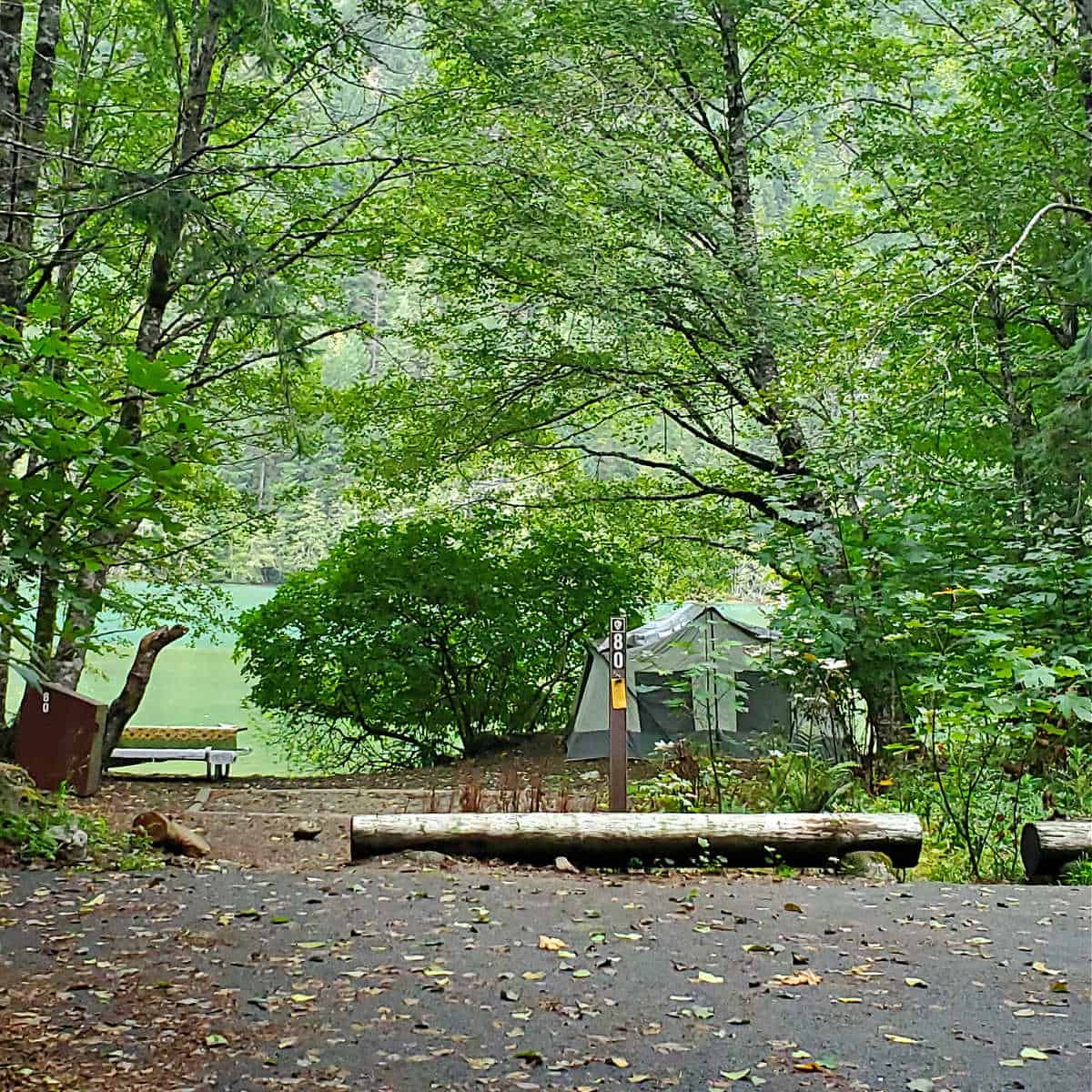
Colonial Creek North Campground
- 41 sites for tents and small RVs
- Open seasonally from late May to mid-September
- Potable water, flush toilets, vault toilets, food storage lockers, and trash/recycling collection available
- Reservations available up to six months in advance
Colonial Creek South Campground
- 95 sites for tents and small RVs - 19 of which are walk-in/boat in
- Open seasonally from late May to mid-September - some sites remain open year-round for primitive camping (no water or other services)
- Potable water, flush toilets, vault toilets, and trash/recycling collection available seasonally
- Food storage lockers available year-round
- Reservations required from late May to September
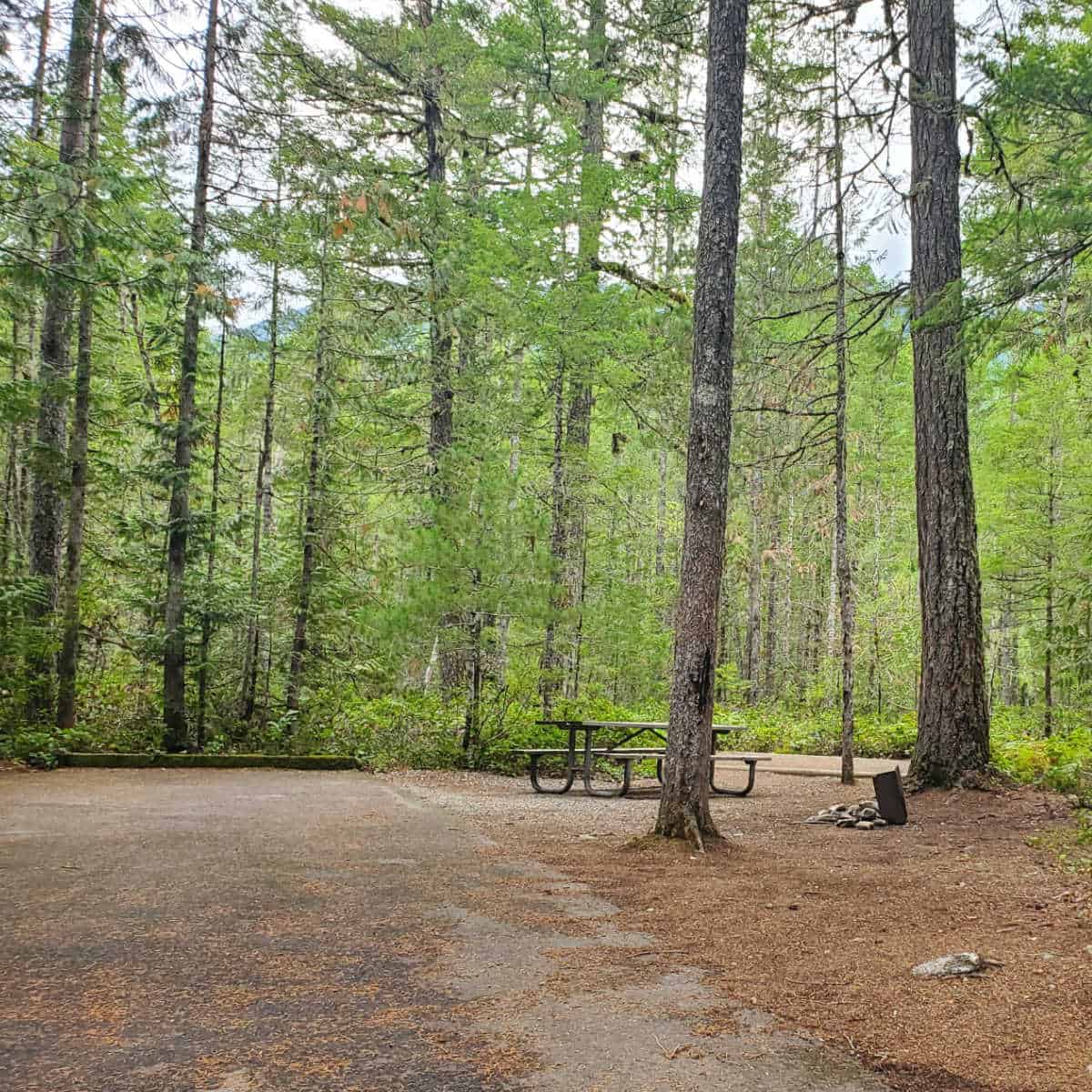
Newhalem Creek Campground
- 105 sites for tents and RVs - 13 of which are walk-in/boat in
- Open seasonally from late May to mid September
- Potable water, flush toilets, food storage lockers, and trash/recycling collection available
- Reservations available up to six months in advance
Lower Goodell Creek Group Campground
- Two group sites with tent pads, a pavilion with picnic tables, and a fire grate
- Maximum of 50 people and 20 vehicles per group
- Open easonally from late May to mid September
- Primitive campground with no water
- Vault toilets available
Boat in Camping
There are 25 boat-in sites available in the backcountry shoreline of the park. Sites are available along Lake Chelan, Ross Lake, and Diablo Lake.
Boat-in camping requires lots of planning and a hardy disposition that can stand up to cold and wind. Sites also require a variety of permits, so be sure to do your research before paddling into the backcountry.
Wilderness Camping
North Cascades National Park offers up tons of wilderness camping opportunities, and there are nearly 140 sites in the Stephen Mather Wilderness and the backcountry sections of the park.
Sites include both boat-in and alpine backpacking sites and everywhere in between. Wilderness sites are equipped with toilets, tent pads, and some even include tables and fire pits.
Permits are required for wilderness camping and can be obtained at no charge from the ranger stations. Permits are available on a first-come-first-served basis.
Additional information on North Cascades National Park
Where to go car camping in North Cascades National Park—This is your complete camping guide for North Cascades National Park, including reservation information and more!
Gorge Lake Campground - This is your complete campground guide, including photos of the campground, site amenities, reservation information, and more!
Colonial Creek Campground - This is your complete campground guide, including photos of the campground, site amenities, reservation information, and more!
Newhalem Creek Campground - This is your complete campground guide, including photos of the campground, site amenities, reservation information, and more!
Goodell Creek Campground - This is your complete campground guide, including photos of the campground, site amenities, reservation information, and more!
Parks Near North Cascades National Park
Lake Roosevelt National Recreation Area
San Juan Island National Historical Park
Ebey's Landing National Reserve
Manhattan Project National Historical Park
Whitman Mission National Historic Site
Check out all of the National Parks in Washington along with neighboring National Parks in Idaho, National Parks in Oregon, Hawaii National Parks, and Alaska National Parks
